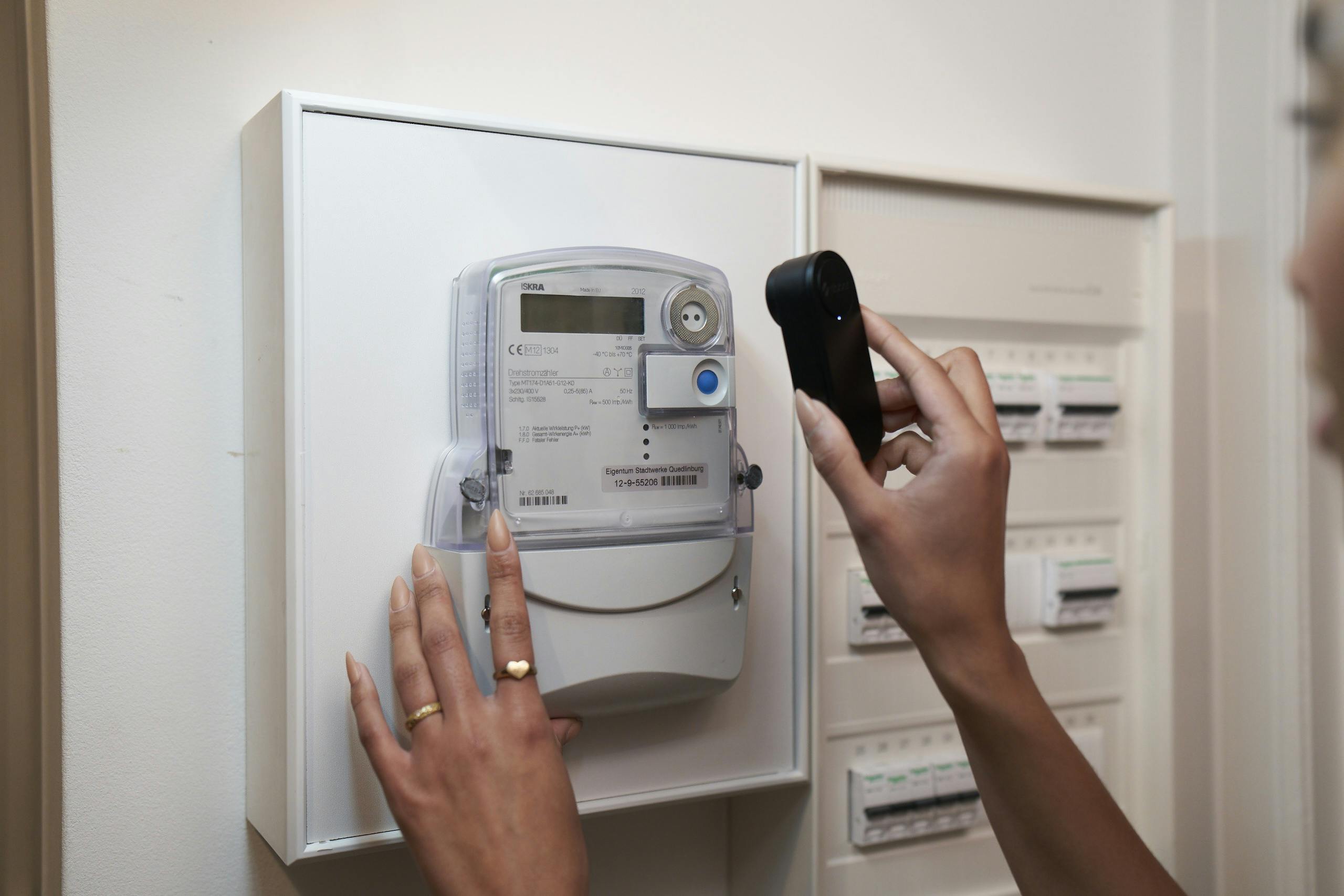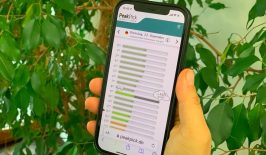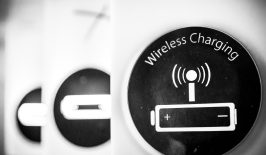When it’s windy out or the sun is shining, green energy flows into European stockpiles. This energy is also theoretically cheaper than traditional sources. However, standard electricity tariffs don’t allow users to make the most of this cheaper, greener energy. Consumers could save costs by shifting their electricity consumption to times when more green electricity is available. Luckily, electricity providers such as Tibber are already getting in on dynamic electricity tariffs, saving their customers real money, while helping to drive forward the green energy transition.
Tibber’s dynamic electricity exchange
Electricity, whether from wind, solar, hydro or coal, is traded on the electricity exchange. Due to the increase in renewable energy sources, prices fluctuate hourly depending on supply and demand. When the wind blows and the sun shines, supply is high and prices are correspondingly low. But, most electricity suppliers do not pass on these fluctuations in their fixed price tariffs. We pay the same price per kilowatt hour, regardless of whether the exchange prices rise or fall.
“Large industrial companies have always been flexible thanks to special contracts with electricity providers. As we now have a much more volatile feed-in, this must also be extended to other consumers,” suggests Dr Astrid Aretz, who researches sustainable energy management and climate protection at the German Institute for Ecological Economy Research (IÖW), in an interview with RESET. Companies such as green electricity provider Tibber are pioneers in this area. Tibber’s dynamic electricity tariff is aimed at private households and is based on current exchange electricity prices.
“The pricing, i.e. the spread between the lowest and highest electricity price on a given day, can be large. When the wind is blowing, I as an end customer pay around 15 cents for a kilowatt hour. If there really is a lull, the price can go up to 30 or 50 cents,” says Aretz. In contrast, the price for normal household electricity is currently around 29 cents per kilowatt hour on average (as of 2023). With local basic suppliers, this can also rise to more than 40 cents.
If you use a dynamic electricity tariff to regularly shift your household’s energy requirements to times when electricity is cheap, you can save money. And the increasing proportion of favourable renewable energies means that the advantages of exchange-oriented prices are even greater. Households with an electric car, heat pump or electric hot water tank, which have a high demand for electricity, benefit in particular from the tariffs.
Basic requirement for dynamic tariffs: Hourly billing
In order to be able to pass on dynamic exchange electricity prices to customers, hourly, consumption-based billing is required. The basic technical prerequisite for this is an intelligent measuring device such as a smart meter. This can record how much electricity was consumed at a certain time.
However, these are still not common features in most European homes. While a smart meter has been installed in almost every household in Sweden since 2009 and in Norway since 2017, the rollout of smart meters in Germany has been slow.
Tibber has developed the Tibber-Pulse electricity tracker as an interim solution to be able to offer dynamic electricity prices to people without smart meters. This turns simple digital meters into smart meters. The electricity tracker enables the transmission of meter readings in real-time. By placing it on the infrared or LED interface of a digital meter, Tibber-Pulse sends the meter readings to the Tibber app.
With the help of algorithms, Tibber buys the cheapest green electricity every hour. This is then passed on to customers at purchase price.
Tibber relies on a sophisticated IT infrastructure
To be able to align their consumption behaviour more flexibly with the electricity supply, consumers also need price signals. Tibber uses an app that allows customers to track their current electricity consumption live at any time. They are also shown a visual breakdown of their consumption. This is intended to incentivise users to adapt their consumption behaviour to fluctuations on the electricity exchange.
The pricing policy is having an effect, says Laura Schlensak from Tibber. “The most obvious change in behaviour can be seen with smart charging. When electricity prices are particularly favourable and therefore the proportion of renewable energy is high, such as on sunny summer days around midday, the consumption curve is particularly high.”
Advancing the energy transition with dynamic prices
However, dynamic pricing not only enables consumers to save costs, it also harbours great potential for the energy transition. “By changing pricing, you can create incentives to shift loads,” says Aretz. If many households shift their electricity consumption to times when there is a large supply of electricity, cheap and low-carbon renewable energies can be utilised and grid overloads avoided.
It remains to be seen whether dynamic prices will actually lead to a widespread shift in the burden. “We are trying to push ahead with research work, but we don’t know exactly yet. I think there is certainly great potential for electric vehicles and heat pumps, but the question is what difference adjusted operating times for small consumers such as washing machines will make. However, I can imagine that there is really significant potential here too, which should also be taken into account.”
Load shifting could also be supported if further automation is added to the dynamic prices in the future. “So that you can actually say: ‘I don’t care when my electric car is charged, I just want to drive somewhere tomorrow at ten, and then it should be full’. And then it will be charged automatically at a suitable time,” says Aretz. It also makes sense to run heat pumps, which also require large amounts of electricity, and smaller consumers such as washing machines at times when there is a high supply of electricity. “This is simply an opportunity to take smaller consumers with us and integrate them even better into this system with their consumption behaviour.”
Conventional providers have so far had little incentive to change outdated structures
But why have dynamic electricity tariffs only recently appeared? “On the one hand, there has been little demand from consumers for this type of tariff to date, as there is a lack of information and knowledge as well as a simple lack of infrastructure to make such tariffs possible at all; a classic chicken and egg problem,” says Laura Schlensak. “On the other hand—and this is part of the truth—many suppliers, particularly in Germany, for example, have benefited from old market structures, as good money could be earned with the fixed electricity prices resulting from less transparent procurement strategies.”
In the Scandinavian market, Tibber has been around since 2017 (Norway) and 2018 (Sweden) and the company now has over 400,000 customers. In contrast, the large energy companies in Germany lack digital expertise. Hourly dynamic tariffs and the associated complex billing models can therefore not be implemented on a broad scale, reports Schlensak.
From 2025, energy suppliers in Germany will be obliged to offer dynamic tariffs. However, and this is a big catch, only for customers with a smart meter. But, this is also coming. The law to restart the digitalisation of the energy transition, which came into force in May 2023, is intended to make the installation of smart meters less bureaucratic and faster.
Before all of Europe is equipped with a smart meter, however, there are further hurdles to overcome. Astrid Aretz experienced this herself. “I tried to have a smart meter installed. After two minutes, it was clear that we wouldn’t get one because we don’t have mobile phone reception in the basement.” Many consumers feel the same way. So if you want to benefit from dynamic prices right now, there is often no way around purchasing a bridging technology such as the Tibber-Pulse.
Tibber also plans to roll out in more of Europe
Tibber has set itself the goal of enabling households throughout Europe to use energy intelligently and also wants to offer its electricity tariff in other countries.
However, the energy transition is not solely in the hands of companies and politicians. With approaches such as energy sharing, consumers can also shape their own dynamic prices. “The idea behind the energy sharing approach is that communities jointly invest in plants and then purchase the electricity from them. Two tariffs could also be offered; one for the electricity from their own system and one if electricity has to be purchased. This should also incentivise consumers to use electricity when a lot of cheap, green electricity is available,” says Aretz.










